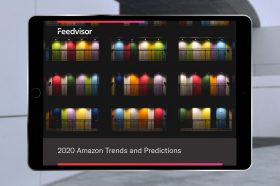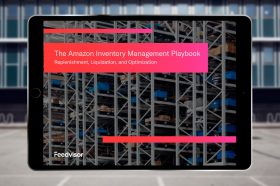Resources - Blog
Adopting an Omnichannel Fulfillment Strategy for Your E-Commerce Business

Stay on top of the latest e-commerce and marketplace trends.
From brick-and-mortar to online marketplaces to mobile apps to curbside pickup, consumers today have more options in their paths to purchase than ever before. Resultantly, consumers expect more from the brands and retailers they engage with. Regardless of the channel in which they engage and ultimately convert, shoppers expect a seamless end-to-end experience that delivers on customer service, personalization, and convenience.
Whether your business began in brick-and-mortar and expanded to e-commerce or you are a digitally native brand launching physical locations, having an omnichannel strategy is becoming more of an imperative for retail businesses seeking to scale — but what exactly does that mean?
Omnichannel fulfillment is a fully-integrated approach to retail that provides consumers with a unified experience across online and offline touchpoints, by which inventory is treated as a single unit and is used to fulfill all channels from one location.
While adopting this strategy can be challenging at first, particularly for e-commerce businesses that might lack the proper infrastructure and inventory management processes, omnichannel fulfillment poses numerous benefits and opportunities. Below, we outline the pros and cons to an omnichannel fulfillment strategy, as well as how you can leverage this approach in your own fulfillment strategy.
The Pros and Cons of Omnichannel Fulfillment
For modern businesses that operate across a number of platforms, such as your own website and online marketplaces like Amazon, having a sound omnichannel fulfillment strategy that seamlessly delivers on consumer demand is crucial for the growth and sustainability of your business. Some benefits of an omnichannel fulfillment strategy include:
1. Enhanced Brand Image: Retail businesses today must meet consumers everywhere they are. Having a unified presence across multiple channels — providing access to your brand and products at every stage and every channel in a customer’s shopping journey — will improve your image and promote brand affinity.
2. Increased Order Efficiency and Accuracy: Your inventory fulfillment process will become much easier to manage as it is streamlined across multiple channels into a single process, resulting in increased order efficiency and delivery accuracy as well as a seamless supply chain.
3. Accurate Reporting: Having all of your inventory streamlined into a single fulfillment process across multiple channels will limit the risk of reporting errors that can lead to stockouts.
4. Customer Loyalty: Amazon’s Prime delivery has led customers to expect rapid delivery. With an omnichannel fulfillment strategy, customers can receive their items faster or even opt for in-store or curbside pickup, blending digital and physical retailing at the consumer’s convenience.
However, there are indeed several challenges and risks to adopting an omnichannel fulfillment strategy. Most significant is perhaps the need for clear communication and inventory visibility across channels.
When orders are arriving from multiple sources, but must be fulfilled from the same single source, conflicts can arise that will impact the customer’s experience or lead to inventory management complications (ie. when an in-store grocery shopper is competing with an Instacart shopper for the last SKU on the shelf).
How to Implement an Omnichannel Fulfillment Strategy
From the moment the customer places the order to the moment the customer receives the order — regardless of the channels used in the path to purchase and delivery — an omnichannel strategy ensures a unified and seamless order fulfillment and customer experience. To achieve this requires the following:
- Clear communication
- Efficient order processing
- Warehouse management
- Shipping and delivery infrastructure
- Consistent customer service
This can be achieved in three ways, as outlined below.
1. Third-Party Logistics (3PL) Fulfillment: The most common solution to omnichannel fulfillment, a 3PL provider handles order fulfillment for you, acting as a link between your business and your customer. These providers manage inventory and shipping for you, which frees up your time to focus on exemplary customer service.
2. Warehouse Fulfillment: This is when a business leases or owns its warehouse facility and ships customer orders directly from that location. However, this can lead to challenges with space availability and inventory management.
3. Store Fulfillment: For businesses that operate brick-and-mortar locations, fulfilling omnichannel orders via your store locations requires maintaining consistent stock within the store until the order is shipped. Essentially, you use the physical resources that you have in-store and leverage them like a warehouse and distribution center. However, as noted earlier, this can lead to conflicts with real-time visibility into inventory levels and competition between in-store and online orders. This solution often works best for smaller brick-and-mortar businesses that are integrating e-commerce into their operation.
Final Thoughts
As adoption of new retail channels continues to grow — from voice commerce to social shopping — modern businesses must ensure their fulfillment strategy is sound and capable of real-time actions and inventory visibility. This will ensure the consumer’s experience is seamless across all channels in which they interact with your brand or product, which will drive long-lasting brand affinity and customer loyalty.
Learn what Feedvisor can do for your business.
When you partner with Feedvisor, you automatically receive access to our true, AI-driven technology and hands-on team of e-commerce experts. Contact one of our team members today to learn more about our end-to-end solution for brands and large sellers on Amazon, Walmart, and e-marketplaces.




